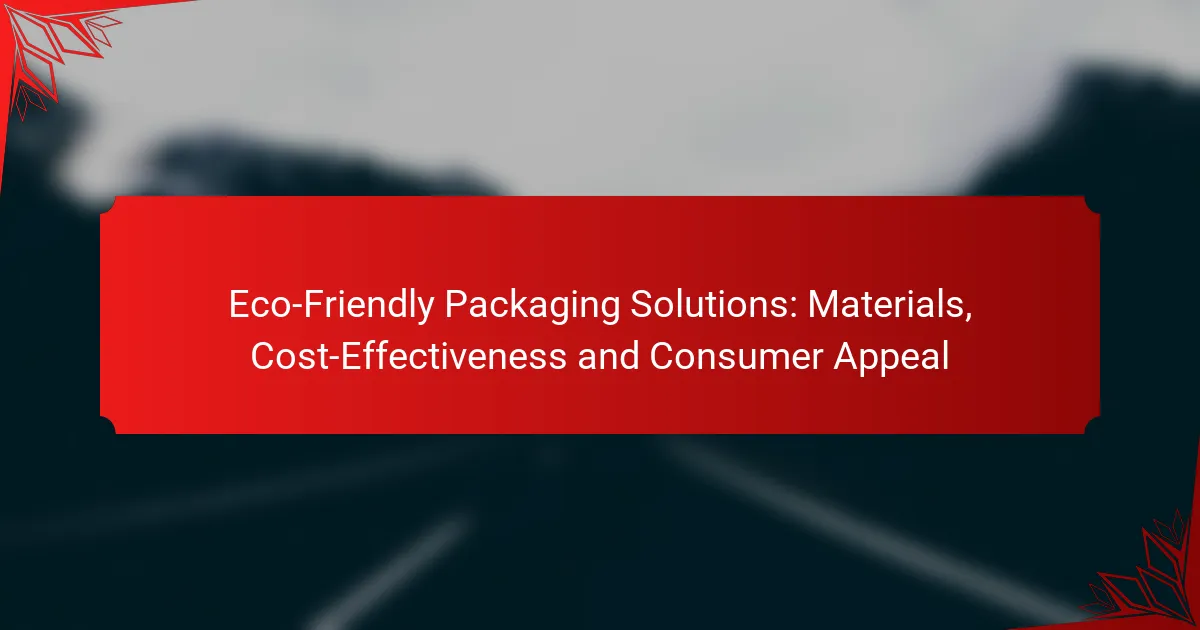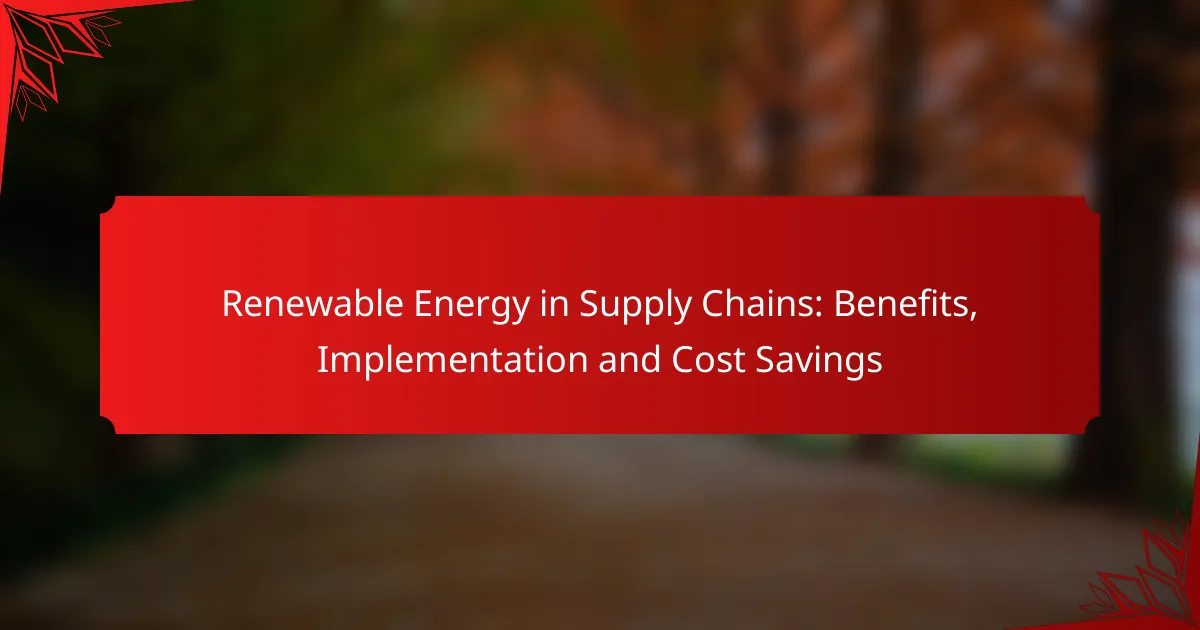Eco-friendly packaging solutions are becoming increasingly important as consumers seek sustainable options that align with their values. Utilizing materials such as bamboo, recycled paper, and biodegradable plastics not only reduces environmental impact but also appeals to a growing market of eco-conscious shoppers. While initial costs may be higher, the long-term savings and benefits of reduced waste disposal make these solutions both cost-effective and attractive to businesses aiming to meet consumer demand for sustainability.
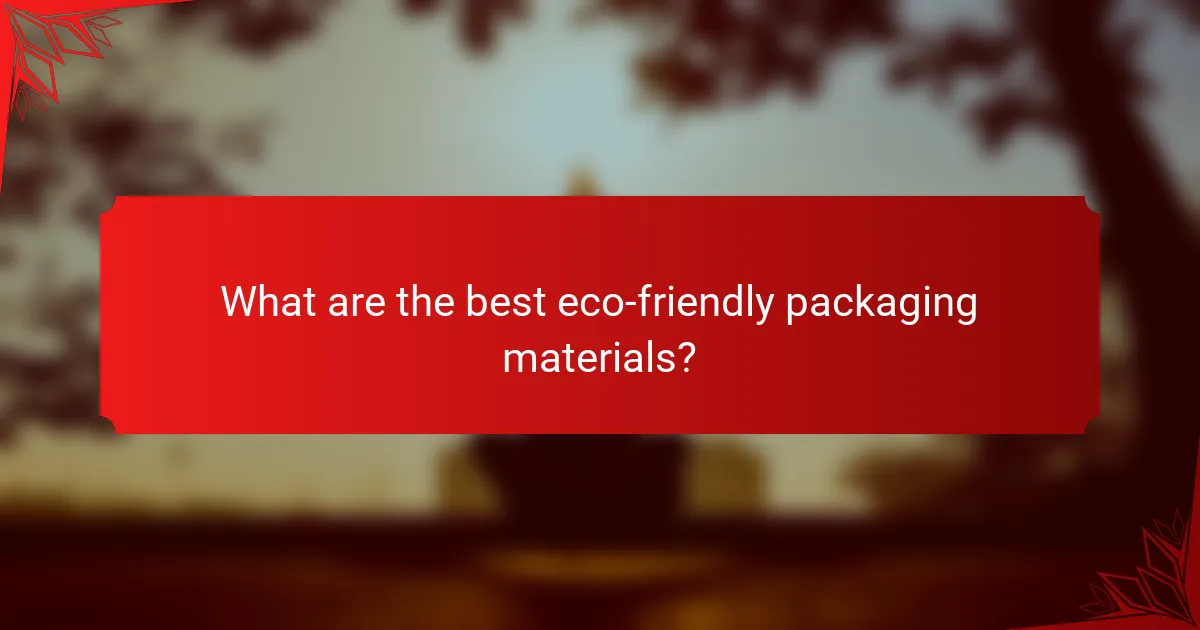
What are the best eco-friendly packaging materials?
The best eco-friendly packaging materials include bamboo, recycled paper, biodegradable plastics, glass containers, and plant-based films. These materials are designed to minimize environmental impact while providing effective protection for products.
Bamboo packaging
Bamboo packaging is a sustainable option due to bamboo’s rapid growth and renewability. It is strong, lightweight, and biodegradable, making it suitable for various products, from food to cosmetics.
When considering bamboo packaging, look for products that use FSC-certified bamboo to ensure responsible sourcing. This material can often be more expensive than traditional options, but its durability and eco-friendliness can justify the cost.
Recycled paper
Recycled paper is made from post-consumer waste, reducing the need for virgin materials and conserving resources. It is widely used for boxes, bags, and cushioning materials.
When using recycled paper, check for the percentage of recycled content to ensure its eco-friendliness. It is generally cost-effective and can be easily customized for branding purposes.
Biodegradable plastics
Biodegradable plastics are designed to break down more quickly than traditional plastics, reducing landfill waste. They are often made from renewable resources like cornstarch or sugarcane.
However, the effectiveness of biodegradable plastics can vary based on environmental conditions. Ensure that the products meet recognized standards, such as ASTM D6400, to guarantee proper degradation.
Glass containers
Glass containers are reusable and recyclable, making them a popular eco-friendly choice for packaging food and beverages. They do not leach chemicals and can preserve product quality effectively.
While glass is heavier and more fragile than other materials, its long lifespan and recyclability can offset these drawbacks. Consider using glass for premium products to enhance consumer appeal.
Plant-based films
Plant-based films are made from renewable resources like corn or potato starch and serve as an alternative to conventional plastic wraps. They are compostable and can provide a barrier against moisture and oxygen.
When selecting plant-based films, verify their compostability certifications. These films can be more expensive than traditional plastic, but they align well with eco-conscious branding strategies.
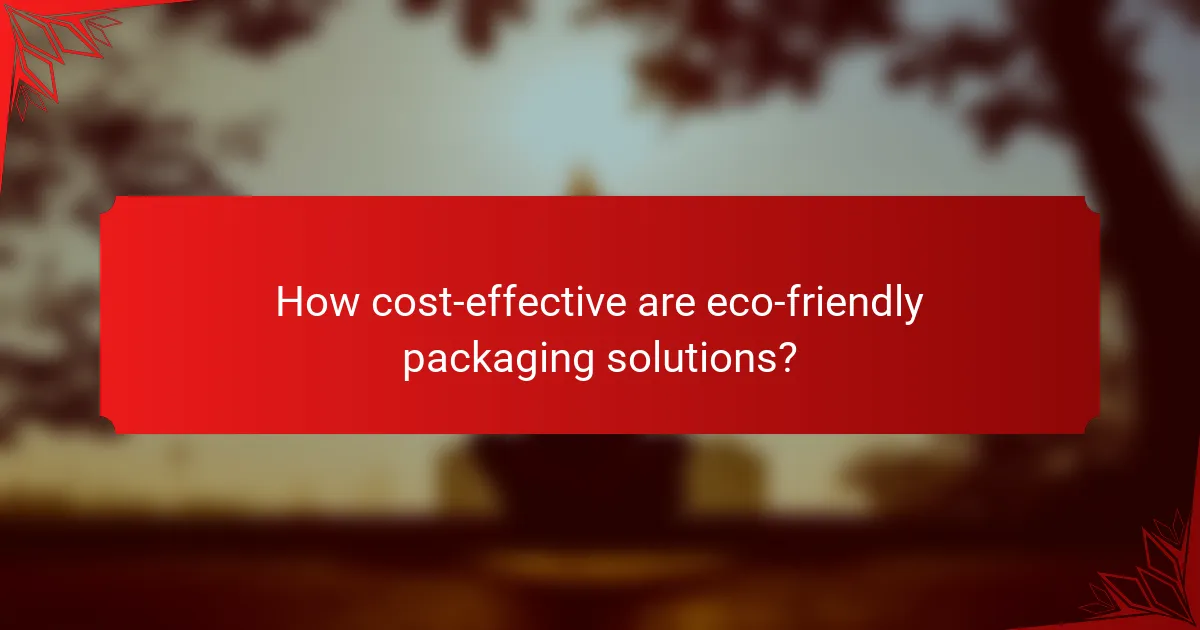
How cost-effective are eco-friendly packaging solutions?
Eco-friendly packaging solutions can be cost-effective over time, balancing initial investments with long-term savings. While the upfront costs may be higher than traditional options, the benefits often include reduced waste disposal fees and increased consumer demand for sustainable products.
Initial investment vs. long-term savings
Investing in eco-friendly packaging typically requires a higher initial outlay due to materials like biodegradable plastics or recycled paper. However, businesses can see significant long-term savings through lower waste management costs and enhanced brand loyalty, which can lead to increased sales.
For example, companies that switch to compostable packaging may incur costs of 20-30% more initially but can save on landfill fees and improve their market position as sustainability becomes a priority for consumers.
Cost comparison with traditional packaging
When comparing eco-friendly packaging to traditional options, the price difference can vary widely based on material and supplier. Traditional plastic packaging often appears cheaper at first glance, but hidden costs related to environmental impact and regulatory compliance can make eco-friendly options more appealing in the long run.
For instance, while a standard plastic container might cost around $0.10, a biodegradable alternative could be priced at $0.15-$0.20. However, the long-term benefits of appealing to eco-conscious consumers can outweigh the initial price difference.
Government incentives for sustainable practices
Many governments offer incentives for businesses that adopt sustainable practices, including tax breaks, grants, or subsidies for using eco-friendly packaging. These incentives can significantly offset the initial costs associated with switching to greener materials.
For example, in the European Union, companies may qualify for funding programs aimed at reducing plastic waste, making eco-friendly packaging a more financially viable option. Businesses should research local regulations and available incentives to maximize their savings.
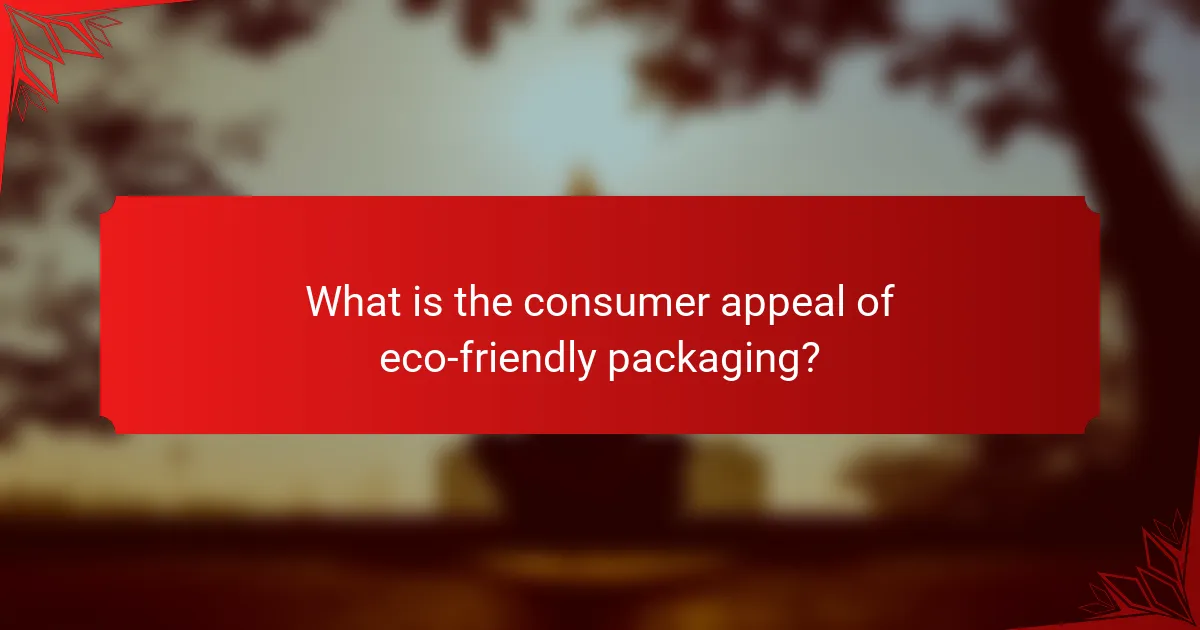
What is the consumer appeal of eco-friendly packaging?
Eco-friendly packaging appeals to consumers due to its alignment with sustainability values and environmental consciousness. As awareness of environmental issues grows, many shoppers prefer products that minimize ecological impact, making eco-friendly packaging a significant factor in their purchasing decisions.
Consumer preferences for sustainability
Consumers increasingly favor brands that prioritize sustainable practices, including the use of eco-friendly packaging. Research indicates that a substantial portion of shoppers is willing to pay a premium for products that are packaged in environmentally responsible materials. This trend highlights a shift towards valuing sustainability over convenience or cost.
Common eco-friendly materials include biodegradable plastics, recycled paper, and plant-based options. Brands that effectively communicate their sustainability efforts often attract a loyal customer base, reflecting a growing preference for responsible consumption.
Brand loyalty linked to eco-friendly practices
Brand loyalty is significantly influenced by a company’s commitment to eco-friendly practices, including packaging choices. Consumers are more likely to remain loyal to brands that demonstrate a genuine dedication to sustainability, as this fosters trust and aligns with their values.
For instance, brands like Unilever and Coca-Cola have made substantial investments in sustainable packaging, which has helped them maintain a strong customer following. Companies that transparently share their sustainability goals and achievements can enhance their reputation and customer loyalty.
Impact on purchasing decisions
Eco-friendly packaging can have a direct impact on purchasing decisions, often swaying consumers towards brands that prioritize environmental responsibility. Many shoppers actively seek out products with sustainable packaging, viewing them as a reflection of quality and care for the planet.
In practice, this means that businesses should consider adopting eco-friendly packaging solutions not just for compliance but as a strategic advantage. Brands that fail to adapt may risk losing market share to competitors who successfully appeal to environmentally conscious consumers.
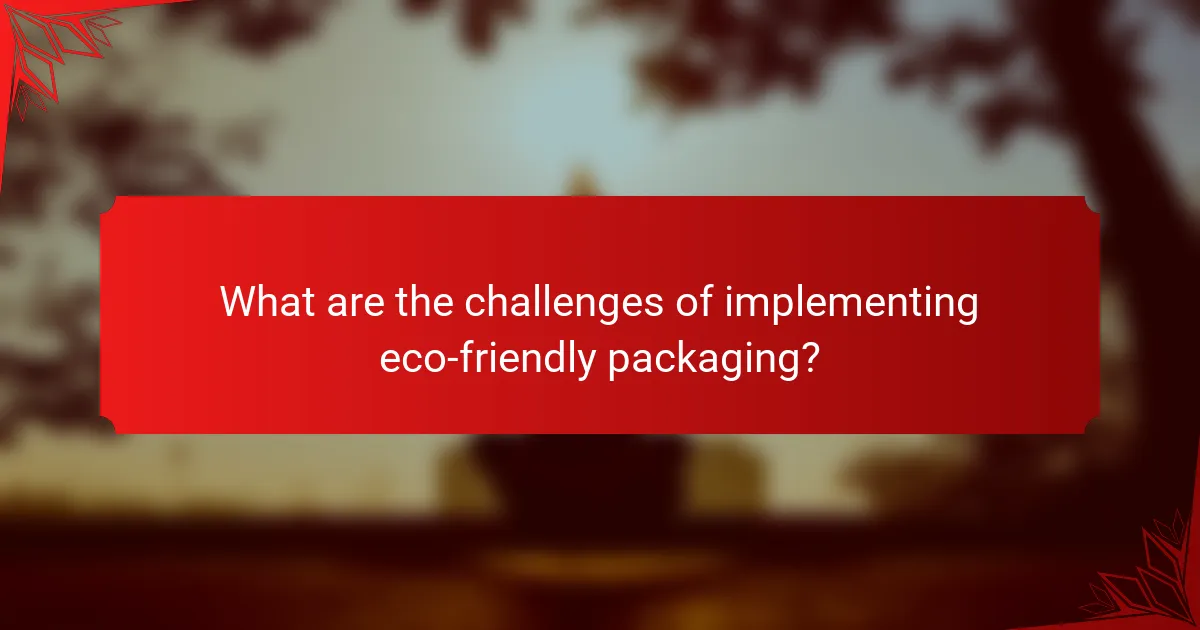
What are the challenges of implementing eco-friendly packaging?
Implementing eco-friendly packaging presents several challenges, including supply chain limitations and the need for consumer education. These obstacles can affect the feasibility and effectiveness of adopting sustainable materials in packaging solutions.
Supply chain limitations
Supply chain limitations can significantly hinder the transition to eco-friendly packaging. Many sustainable materials, such as biodegradable plastics or recycled paper, may not be readily available or may require specialized suppliers, leading to increased costs and potential delays.
Additionally, existing infrastructure may not support the efficient distribution of these materials. Companies must evaluate their supply chains to identify potential bottlenecks and consider partnerships with eco-friendly suppliers to ensure a steady flow of sustainable packaging options.
Consumer education and awareness
Consumer education and awareness play a crucial role in the success of eco-friendly packaging initiatives. Many consumers may not fully understand the benefits of sustainable packaging or how to properly dispose of it, which can lead to confusion and ineffective recycling practices.
Brands should invest in clear communication strategies that highlight the advantages of eco-friendly packaging, such as reduced environmental impact and improved product safety. Engaging consumers through informative campaigns and labeling can foster a greater appreciation for sustainable choices and encourage responsible behavior.

How to choose the right eco-friendly packaging for your business?
To choose the right eco-friendly packaging, assess your product’s needs, consider material options, and evaluate cost-effectiveness. Prioritize solutions that align with your brand values while appealing to environmentally conscious consumers.
Assessing product compatibility
Product compatibility is crucial when selecting eco-friendly packaging. Consider the physical characteristics of your product, such as size, weight, and fragility, as these factors will influence the type of materials you should use.
For instance, biodegradable materials may be suitable for lightweight items, while heavier products might require sturdier options like recycled cardboard. Always test packaging solutions to ensure they protect your product during shipping and handling.
Additionally, consider how your packaging interacts with the product itself. For food items, ensure that materials meet safety standards and do not affect taste or quality. Research local regulations regarding food packaging to ensure compliance.
